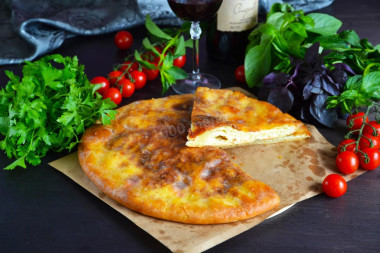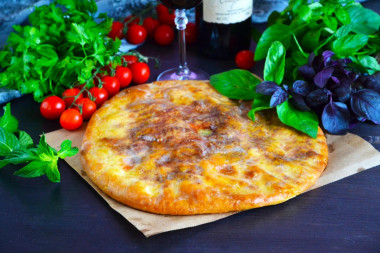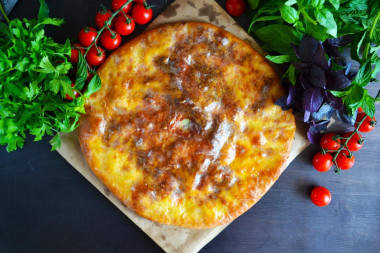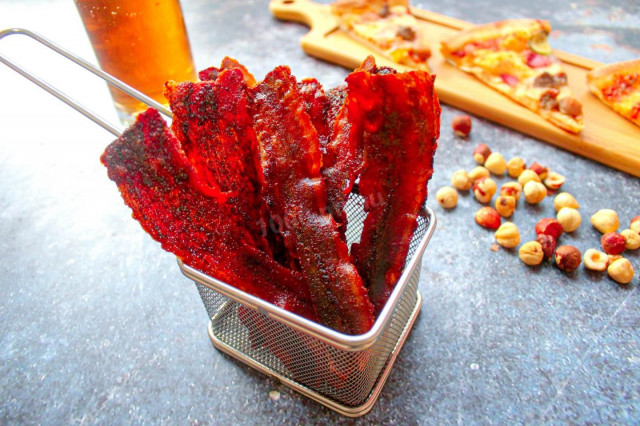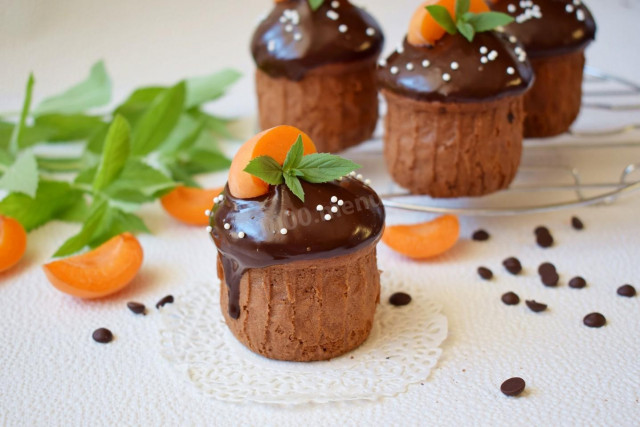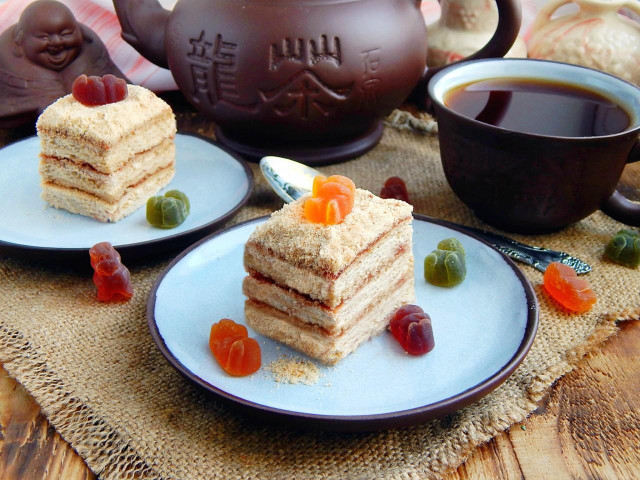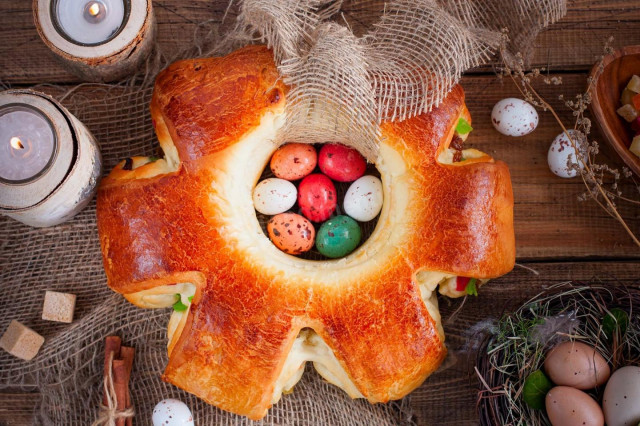Composition / ingredients
Step-by-step cooking
Step 1:
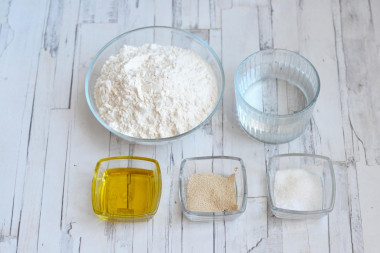
How to make Imeretian Khachapuri? Prepare all the necessary ingredients according to the list and start cooking with the dough. Take flour only of the highest grade. Olive oil or other vegetable oil. Dry yeast can be replaced with fresh pressed yeast, they need 2 times more, that is, about 15 g.
Step 2:
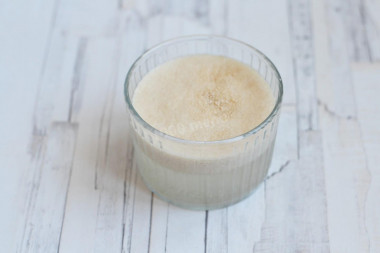
I always check yeast for activity. Therefore, in warm water heated to 37-40 ° C, dissolve sugar and salt. Sprinkle dry yeast over the surface and leave until a fluffy cap appears. This means that the yeast is working and can be cooked further. If the caps do not appear, then the yeast is of poor quality and the dough will not rise with them.
Step 3:
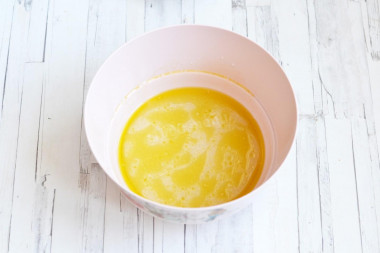
In a bowl, mix the activated yeast and vegetable oil.
Step 4:
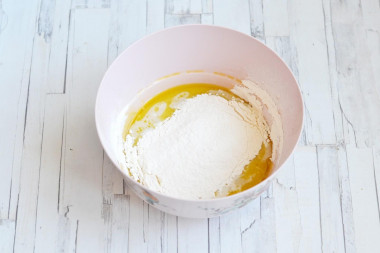
Gradually, in several steps, pour in the sifted flour.
Step 5:
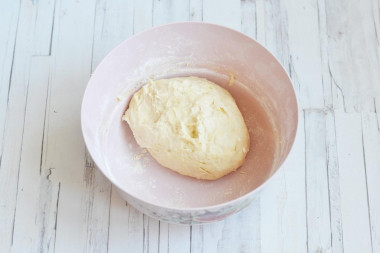
Knead a soft elastic non-sticky dough. At first, the dough sticks to the hands, but gradually loses its stickiness more and more. If the dough sticks to your hands very much, lightly lubricate them with vegetable oil. You can add a little wheat flour (since flour can be different and absorb moisture in different ways). But in any case, try not to clog the dough with flour, otherwise the dough will turn out too dense. It is better to add flour later, when rolling out the dough.
Step 6:
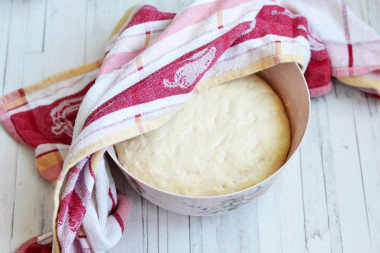
Cover the dough with a towel and leave it warm to rise for 40 minutes.
Step 7:
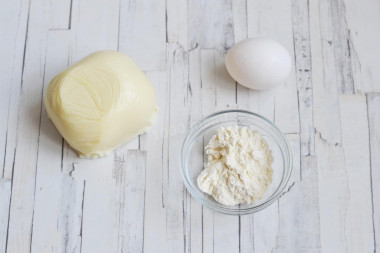
Now prepare the filling. Instead of suluguni, you can use Imeretian cheese. The egg needs a large one.
Step 8:
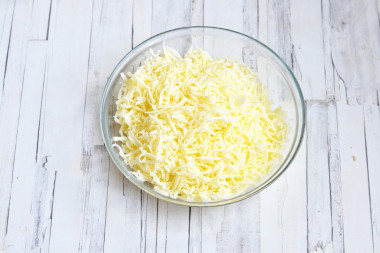
Grate the sulguni on a coarse grater.
Step 9:
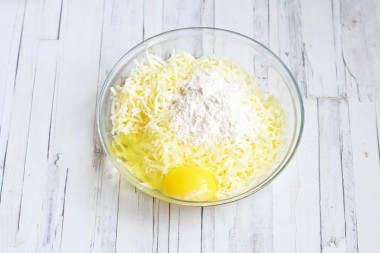
Add the egg and flour to the cheese and mix thoroughly. It is better to mix immediately with your hands so that all the ingredients are well connected with each other. It will turn out a slightly sticky mass.
Step 10:
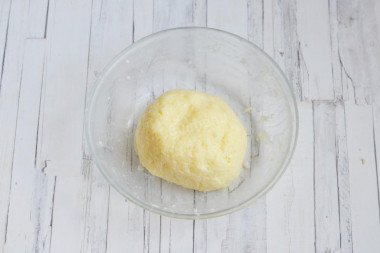
Form a dense ball of cheese mass.
Step 11:
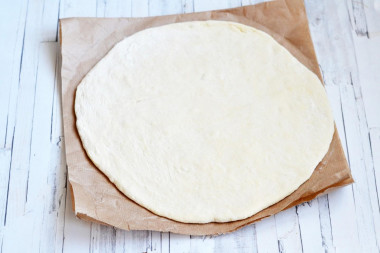
Knead the dough that has come up, put it on floured parchment and roll it out with your hands or a rolling pin into an even circle with a diameter of about 20-25 cm. The dough is very pliable, soft, easy to stretch with just your hands.
Step 12:
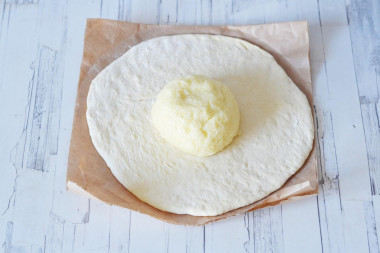
Place a cheese ball in the center of the tortilla.
Step 13:
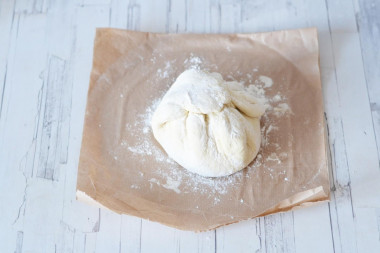
Gather the free edges of the dough carefully around the cheese and pinch thoroughly, leaving no holes.
Step 14:
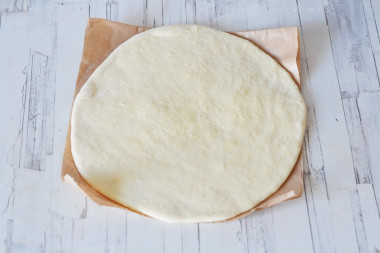
Lightly sprinkle the top with flour and turn the dough to the other side. With your hands or a rolling pin, carefully again, so that the dough does not break, flatten the workpiece into an even round cake with a diameter of about 30 cm.
Step 15:
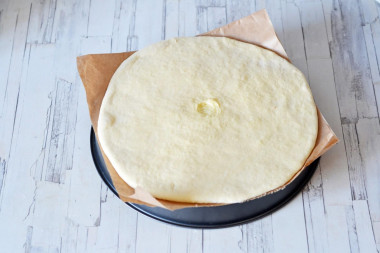
In the center of the cake, make a small hole for steam to escape. Together with the parchment, transfer the workpiece to a baking sheet. Bake the khachapuri in a preheated 180 ° C oven for about 10-15 minutes until golden brown. The exact time depends on your oven.
Step 16:
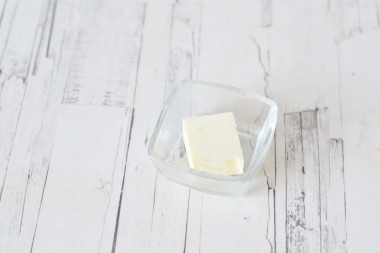
To lubricate the khachapuri, take 20-30 g of butter.
Step 17:
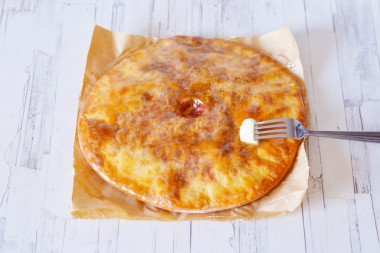
Remove the hot khachapuri from the oven, immediately brush with a piece of butter and serve to the table. Enjoy your meal!
The liquid in which yeast is bred should be pleasant to the touch, no higher than 40 degrees. Why is this important? In a warm environment, yeast is well activated, in a hot one it will die, and in a cold one it simply will not work. To avoid unpleasant surprises, check the yeast before mixing with the rest of the ingredients. Pour a little warm milk into a bowl, stir in the yeast. Cover the bowl with a kitchen towel and put it in a warm place without drafts for 10-15 minutes. During this time, a foam yeast cap should appear on the surface of the sponge. If this did not happen, then the fermentation process has not started (the yeast is overdue or spoiled). In this case, it is worth taking other yeast, otherwise baking will not work.
Be prepared for the fact that you may need more or less flour than indicated in the recipe. Focus not on the amount of flour, but on the desired consistency of the dough. To avoid mistakes, read about flour and its properties!
Dry yeast can be replaced with fresh pressed yeast, based on the proportion of 1:3. That is, for 1 gram of dry yeast required by the recipe, you need to take 3 grams of fresh.
Caloric content of the products possible in the composition of the dish
- Chicken egg - 157 kcal/100g
- Egg white - 45 kcal/100g
- Egg powder - 542 kcal/100g
- Egg yolk - 352 kcal/100g
- Ostrich egg - 118 kcal/100g
- Whole durum wheat flour fortified - 333 kcal/100g
- Whole durum wheat flour, universal - 364 kcal/100g
- Flour krupchatka - 348 kcal/100g
- Flour - 325 kcal/100g
- Granulated sugar - 398 kcal/100g
- Sugar - 398 kcal/100g
- Suluguni - 290 kcal/100g
- Butter 82% - 734 kcal/100g
- Amateur unsalted butter - 709 kcal/100g
- Unsalted peasant butter - 661 kcal/100g
- Peasant salted butter - 652 kcal/100g
- Melted butter - 869 kcal/100g
- Vegetable oil - 873 kcal/100g
- Salt - 0 kcal/100g
- Water - 0 kcal/100g
- Dry yeast - 410 kcal/100g


